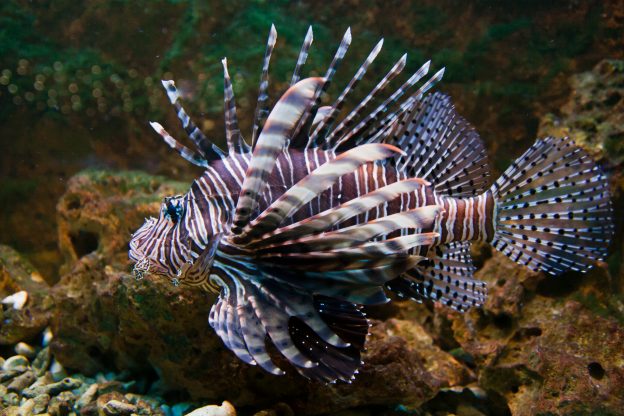Lighting is one of the most important factors for your fish tank, and choosing the right lights, including type, brightness, and size, can have a significant impact on the overall health of your fish and the small ecosystem that is your aquarium. This is especially true if your tank has living coral, as this life form depends on light for its food and nutrition. So what lighting should you buy for a saltwater aquarium vs reef aquarium? We’d like to share some basic information to help you make the right choice.
What Lighting Should You Buy for a Saltwater Aquarium vs Reef Aquarium?
• Basic Saltwater Aquarium Lighting with No Coral
If you have a tank that holds only fish and artificial plants and decorations, then a standard light fixture will suit your needs just fine. Generally, you’ll want a lighting system that provides one to two watts for every gallon, which should provide enough light to simulate daytime conditions.
In reality, a fish-only aquarium is very forgiving as far as the type of light you choose, as fish are not dependent on light to survive. Give them enough light so you can see them and you’ll essentially meet their needs. However, it’s generally accepted that you should avoid standard bulbs, as they can promote brown algae. Instead, choose fluorescent or LED lighting.
• Reef Aquarium Lighting with Coral
What lighting should you buy for coral? That’s when the answer becomes more complex. When you add life that depends directly on light, which includes coral and plants, you need to be very particular about the light you provide. If you have a tank with coral, choose metal halide lights, LEDs, T-5 HO, VHO, or compact lights. Coral needs light for a large portion of its nutrition, but the required amounts will vary. You can find coral that grows near the surface, or coral that lives over 60 feet down, which means they are adapted to low-light conditions.
The generally accepted ratio is four to eight watts for every gallon. However, if you choose coral that does better in low-light conditions, you can get by with low-powered light and still have a thriving aquarium.
• Be Aware of Heat from Lighting
No matter what type of aquarium you have, it’s important to be aware of heat generation from lights. Products like metal halide lights can increase water temperature, so you may need to use fans or other methods to keep the water cool. You may even need a chiller, depending on the size of your aquarium and the specific setting.
What Lighting Should You Buy for a Saltwater Aquarium vs Reef Aquarium? Get the Expert Answers You Need!
Aquariums can be gorgeous, changing the character and charm of a room. However, they can also be complex.
Work with Seatech, the area’s expert in aquarium design and maintenance, and you’ll have a saltwater aquarium that enhances your entire home with the right lighting for fish, plants, and coral.





